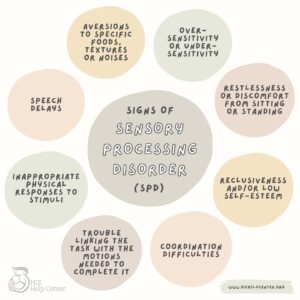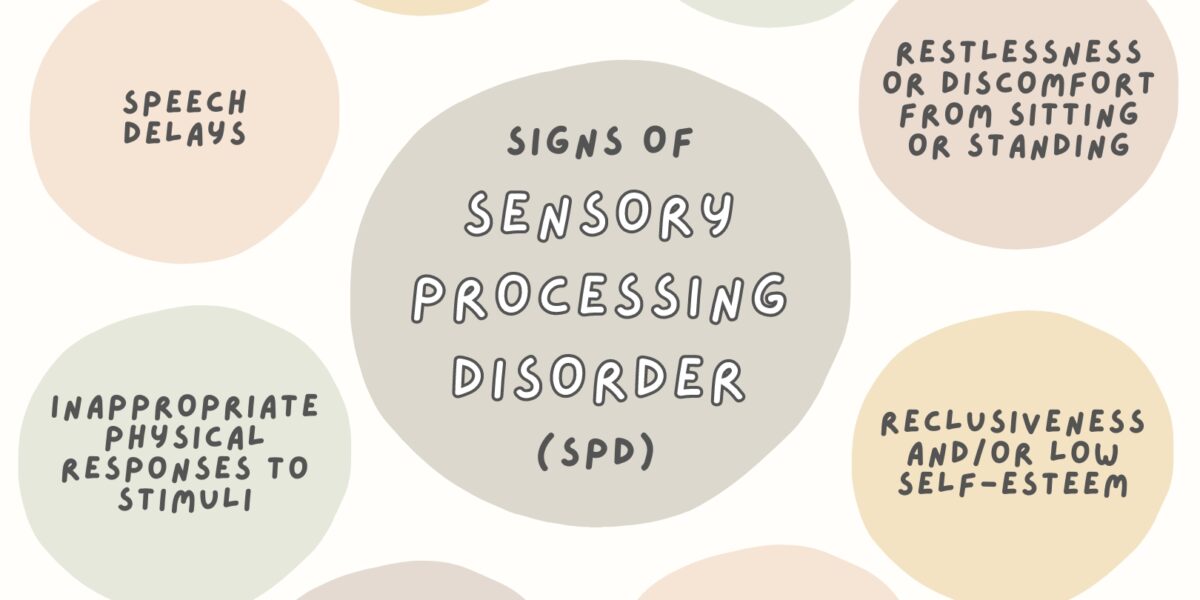 Generally, people are familiar with only five senses: vision, hearing, taste, touch, and smell. However, there are also two less commonly discussed senses. These are proprioception, or an awareness of one’s own body parts, and the vestibular sense, which involves balance, movement, and coordination (1). Children with sensory processing issues may have abnormal responses to any of these senses.
Generally, people are familiar with only five senses: vision, hearing, taste, touch, and smell. However, there are also two less commonly discussed senses. These are proprioception, or an awareness of one’s own body parts, and the vestibular sense, which involves balance, movement, and coordination (1). Children with sensory processing issues may have abnormal responses to any of these senses.
Associated conditions
Although the term “sensory processing issues” is often exclusively associated with autism spectrum disorder (ASD), many people do not realize that theses symptoms that characterize ASD can also be caused by hypoxic-ischemic encephalopathy (HIE). Because HIE often leads to cerebral palsy (CP), it is also common for children with CP to have difficulty with sensory processing.
Types and signs of sensory processing issues
There are two main types: hypersensitivity and hyposensitivity.
What is Hypersensitivity?
Hypersensitivity often leads to sensory avoiding, or avoiding sensory input because it overwhelms them (2). Children who are hypersensitive become easily overwhelmed by sensory stimulation and may (1):
- Be bothered by loud noises, bright lights, scratchy or form-fitting clothing, or physical contact (especially unexpected touch)
- Have a tendency to become distracted by things others barely notice
- Struggle to understand the position of their bodies in relation to other objects or people
- Move clumsily and bump into things
- Fail to understand the amount of force they’re applying (e.g. when trying to erase something, they may unintentionally rip the paper)
What is Hyposensitivity?
 Hyposensitivity often leads to sensory seeking, or seeking out sensory stimulation (2). Children who are hyposensitive tend to crave more stimulation, and may (1):
Hyposensitivity often leads to sensory seeking, or seeking out sensory stimulation (2). Children who are hyposensitive tend to crave more stimulation, and may (1):
- Frequently touch objects and other people (they may not understand personal space)
- Be unable to sit still, and enjoy jumping, spinning, and crashing into things
- Enjoy squeezing sensations like strong hugs
- Have a very high pain tolerance
- Have trouble predicting their own strength
It is important to note that hyper- and hyposensitivity are not mutually exclusive; many children with sensory processing issues experience both.
Management through therapy
Many children with sensory processing issues participate in occupational therapy, which often includes sensory integration therapy (2). This type of therapy attempts to introduce repetitive sensory stimulation to help the brain learn to respond to it in a more organized way. Another approach is sensory dieting, when the occupational therapist creates a carefully planned schedule of sensory activities to help the child meet their sensory needs. These treatments can help children avoid becoming overwhelmed by sensory stimulation, and better cope with distressing situations. It may also help children focus and improve certain daily skills.
Schooling, IEPs & IDEA
Sensory processing issues alone are technically not covered by the Individuals with Disabilities Education Act (IDEA), which is a federal law that mandates children with disabilities receive special education services at school. However, they are often associated with other disabilities that do qualify; if your child shows signs of sensory processing issues, you can request that your child’s school perform an evaluation to determine their needs and how the school can help to address them.
Children who qualify for special education will receive an individualized education plan (IEP) and a Section 504 plan. Children with IEPs or Section 504 plans may receive certain accommodations and modifications at school to help maximize their learning potential.
Related Reading
- New Research Links Birth Complications (Including HIE) to Increased Autism Risk of Up to 44%
- Occupational Therapy
- Sensory Integration Therapy
- Tips for Helping Children with Sensory Processing Issues Get Dressed
Sources
- Sensory Processing FAQ. (n.d.). Retrieved March 4, 2024, from https://childmind.org/article/sensory-processing-faq/
- Team, U. (n.d.). Understanding Sensory Processing Issues. Retrieved March 6, 2024, from https://www.understood.org/en/learning-attention-issues/child-learning-disabilities/sensory-processing-issues/understanding-sensory-processing-issues

